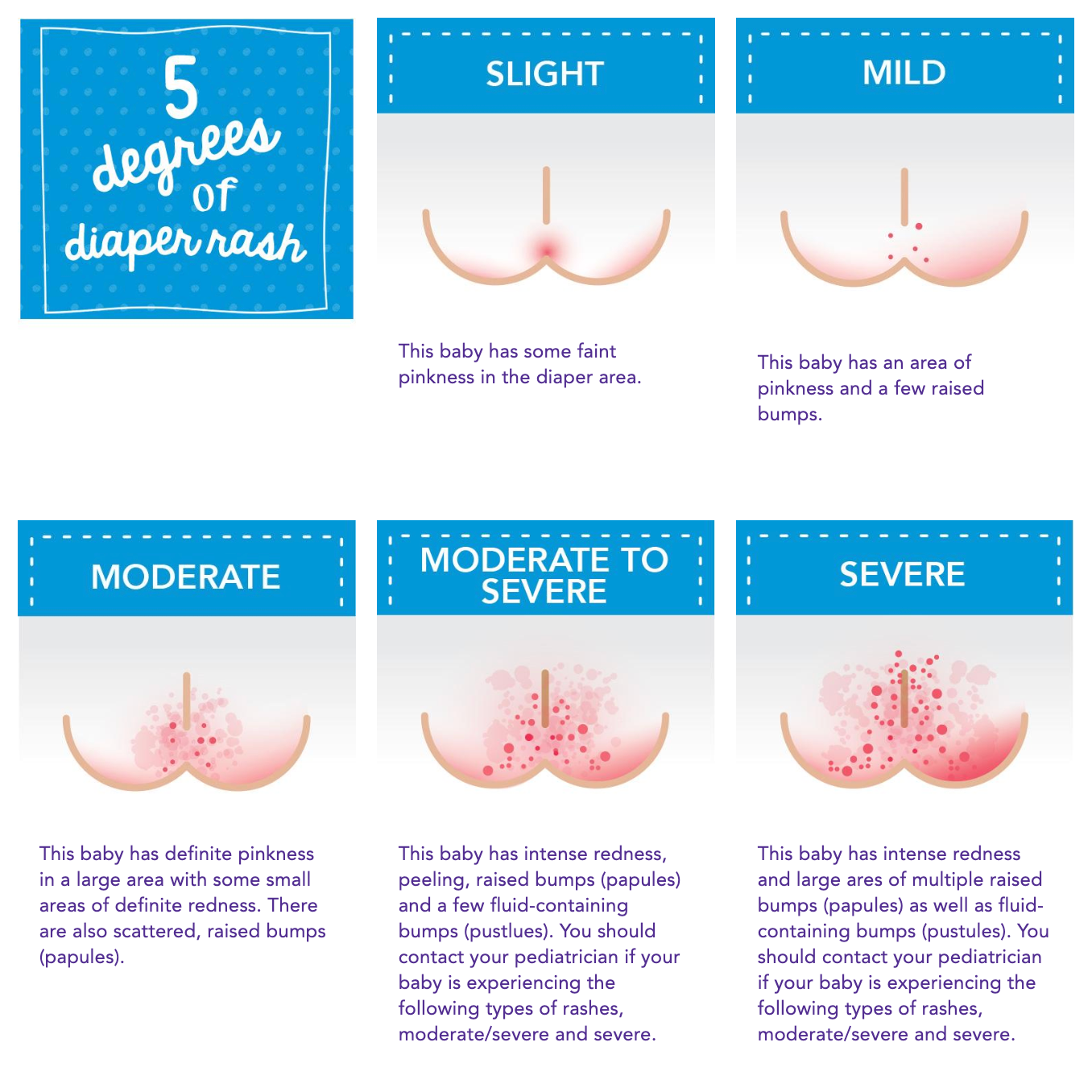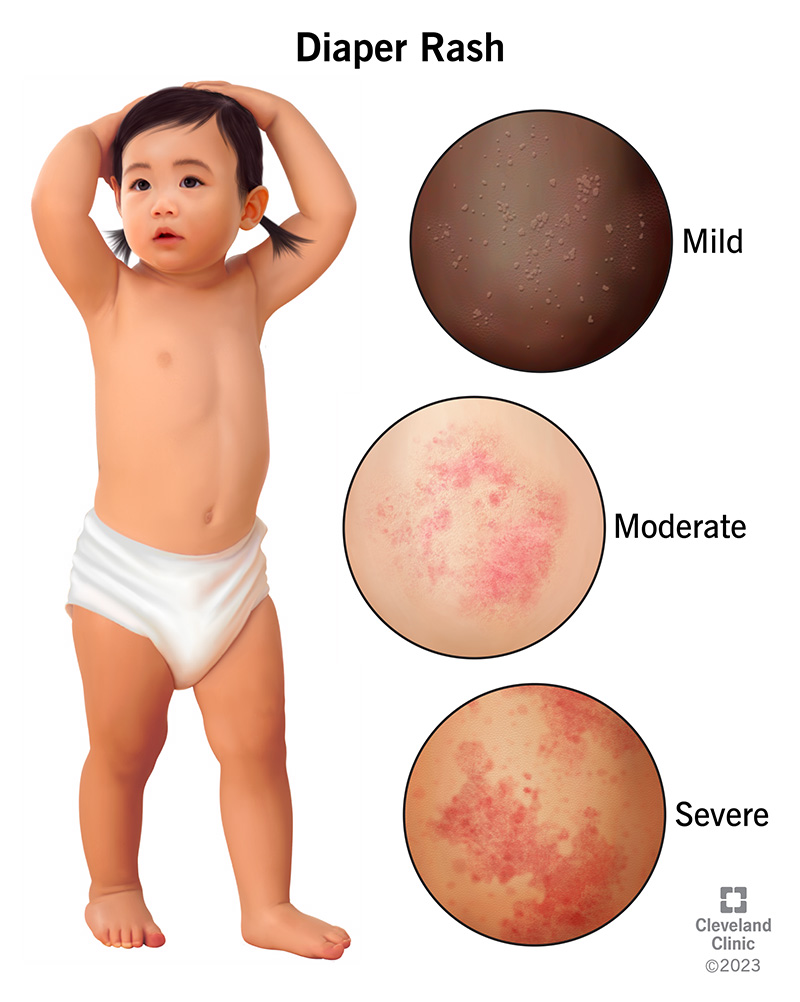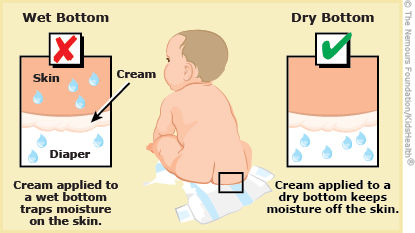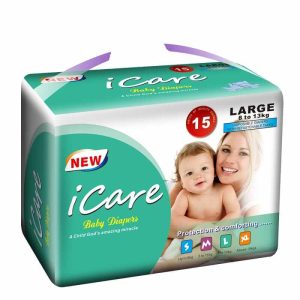Clean and dry the affected area frequently. Apply a diaper rash cream to soothe and protect the skin.
Diaper rash is a common issue that many parents face. It occurs due to prolonged exposure to moisture and irritants. Keeping the baby’s skin clean and dry is essential. Use a gentle, fragrance-free cleanser and pat the area dry. Applying a diaper rash cream can help form a protective barrier.
Consider using breathable diapers and changing them often. Allowing the baby some diaper-free time can also help the skin heal. If the rash persists or worsens, consult a pediatrician. Proper hygiene and care can prevent and treat diaper rash effectively.

Credit: www.eliandalibaby.com
Recognizing Diaper Rash
Diaper rash is a common issue for babies. Identifying it early can help prevent discomfort. This section will guide you through recognizing diaper rash.
Common Symptoms
Diaper rash often presents with distinct symptoms. Here are some signs to watch for:
- Redness: Skin appears red and inflamed.
- Irritation: Baby seems uncomfortable, especially during diaper changes.
- Swelling: The affected area may look puffy.
- Blisters: Small bumps or sores can develop.
- Dry Skin: The rash area might feel rough or scaly.
Severity Levels
Understanding the severity of diaper rash can help you take the right steps. Diaper rash varies in intensity. Here are the levels:
| Severity Level | Symptoms |
|---|---|
| Mild | Light redness, slight irritation, no blisters |
| Moderate | More pronounced redness, some swelling, small blisters |
| Severe | Bright red, large blisters, open sores, significant discomfort |
These levels help determine the care needed.
Early recognition and proper care can keep your baby comfortable. Follow this guide to manage diaper rash effectively.

Credit: www.youtube.com
Immediate Actions
Diaper rash can cause discomfort for your baby. Taking immediate actions helps soothe your baby’s skin. Follow these steps to provide quick relief.
Clean And Dry
First, remove the soiled diaper as soon as possible. Clean the affected area with warm water and a soft cloth. Avoid using harsh wipes with alcohol or fragrances. Pat the skin dry gently with a soft towel. Do not rub the skin. Allow the skin to air dry for a few minutes before putting on a new diaper.
Soothing Baths
A soothing bath can ease your baby’s discomfort. Fill the tub with lukewarm water. Add a small amount of baking soda or oatmeal to the water. This helps reduce inflammation and soothe the skin. Let your baby soak in the bath for about 10 minutes. Gently pat your baby dry with a soft towel after the bath.
Effective Home Remedies
Diaper rash can cause discomfort for your baby. Luckily, there are many effective home remedies to soothe your baby’s skin. Using natural ingredients and DIY pastes can be very helpful.
Natural Ingredients
Natural ingredients are gentle on your baby’s skin. Here are some options:
- Coconut Oil: This is a natural moisturizer. Apply a thin layer to the rash.
- Aloe Vera: Aloe vera has healing properties. Apply the gel directly to the rash.
- Baking Soda: Mix with water for a soothing bath. This helps reduce irritation.
- Breast Milk: Apply a few drops to the rash. It has natural healing properties.
Diy Pastes
Making DIY pastes at home can provide quick relief. Here are some easy recipes:
| Ingredients | Instructions |
|---|---|
| Baking Soda Paste | Mix 1 tablespoon of baking soda with 1 tablespoon of water. Apply gently to the rash. |
| Oatmeal Paste | Grind oatmeal into a fine powder. Mix with water to form a paste. Apply to the affected area. |
| Cornstarch Paste | Mix cornstarch with a small amount of water. Apply to dry and soothe the rash. |
These pastes are easy to make and use. They can help reduce irritation quickly.
Choosing The Right Diaper
Choosing the right diaper for your baby can prevent diaper rash. The correct diaper type can make a big difference. Let’s explore key factors when selecting diapers for sensitive skin.
Material Matters
The material of the diaper plays a crucial role. Opt for diapers made from hypoallergenic materials. These materials are gentle on your baby’s skin. Avoid diapers with harsh chemicals or fragrances. Look for diapers with a breathable outer layer. This helps keep the skin dry and reduces irritation.
Consider cloth diapers as an option. They are often made from natural fibers like cotton. Cotton is soft and absorbent, reducing the risk of rashes. Modern cloth diapers come with moisture-wicking liners. These liners help keep your baby’s skin dry.
Here’s a quick comparison of common diaper materials:
| Material | Benefits | Considerations |
|---|---|---|
| Cotton | Soft, natural, breathable | May need frequent changes |
| Hypoallergenic synthetics | Reduces allergic reactions | Ensure no harsh chemicals |
| Cloth | Reusable, eco-friendly | Requires washing |
Proper Fit
The proper fit of the diaper is essential. A well-fitted diaper prevents leakage and reduces irritation. Ensure the diaper is not too tight. Tight diapers can cause chafing and rashes. On the other hand, a loose diaper may not provide adequate absorption.
Use the following checklist to ensure a good fit:
- Check for red marks around the waist and legs.
- Ensure the diaper covers the buttocks entirely.
- Adjust the tabs for a snug fit without tightness.
It’s also important to choose the right size. As your baby grows, their diaper size will change. Regularly check the weight guidelines on diaper packaging. Moving up a size can provide better comfort and absorption.
Diapering Techniques
Diaper rash can be uncomfortable for your baby. Using the right diapering techniques can help soothe and prevent it. Let’s explore some effective methods.
Frequent Changes
Changing diapers frequently is essential. A wet or dirty diaper can irritate your baby’s skin. Aim to change the diaper every two hours. Always change it immediately after a bowel movement. Keep a schedule to ensure timely changes.
| Time | Action |
|---|---|
| Every 2 hours | Check and change the diaper |
| After each bowel movement | Change the diaper immediately |
Air Time
Allowing your baby’s skin to breathe is crucial. Give your baby some air time. Let them lie on a soft towel without a diaper for a few minutes. Do this several times a day. This helps the skin to dry and heal faster.
- Lay your baby on a soft towel
- Leave them without a diaper for 10-15 minutes
- Repeat this process 3-4 times daily
Using Diaper Creams
Diaper rash can cause discomfort for babies. Using diaper creams can help soothe and protect their delicate skin. Understanding the different types of creams and knowing how to apply them correctly can make a big difference.
Types Of Creams
There are various types of diaper creams available. Each has its own benefits. Here are some common types:
| Type of Cream | Benefits |
|---|---|
| Barrier Creams | Protects skin from moisture and irritants. |
| Antifungal Creams | Treats yeast infections. |
| Hydrocortisone Creams | Reduces inflammation and itching. |
Application Tips
Applying diaper cream correctly is key to its effectiveness. Follow these tips for the best results:
- Clean the baby’s bottom with warm water and a soft cloth.
- Pat the area dry with a soft towel.
- Apply a thin layer of diaper cream.
- Be sure to cover the entire rash area.
- Wash your hands after applying the cream.
These tips help ensure the cream works effectively. Always use a clean and dry surface before applying any product.
When To Seek Medical Help
Diaper rash is a common issue many parents face. While most diaper rashes can be treated at home, there are times when you need to consult a doctor. Understanding when to seek medical help can ensure your baby gets the right care.
Signs Of Infection
Monitor your baby’s diaper rash for signs of infection. These signs may include:
- Fever: A temperature higher than 100.4°F (38°C).
- Pus or Discharge: Yellowish fluid oozing from the rash area.
- Swelling: Inflamed skin with redness extending beyond the diaper area.
- Blisters or Sores: Painful blisters or open sores on the skin.
If you notice any of these symptoms, contact your pediatrician immediately. Early detection can prevent complications.
Persistent Rashes
Not all diaper rashes clear up quickly. Some may last longer than expected. If the rash persists for more than three days, it might be time to seek medical advice.
Persistent rashes can indicate underlying issues, such as:
- Allergies: Reactions to diapers, wipes, or creams.
- Yeast Infections: Fungal infections often require specific treatments.
- Skin Conditions: Eczema or other skin issues.
Consulting a doctor can help identify the cause and provide appropriate treatment.
Remember, your baby’s health is a priority. Don’t hesitate to seek help when necessary.

Credit: my.clevelandclinic.org
Preventive Measures
Preventing diaper rash is easier than treating it. Follow these simple steps to keep your baby’s skin healthy and rash-free.
Routine Practices
Consistent care can prevent diaper rash. Follow these routines:
- Change diapers often to keep the skin dry.
- Use a gentle, fragrance-free baby wipe.
- Let your baby’s skin air dry before putting on a new diaper.
- Apply a thin layer of diaper cream as a barrier.
- Choose diapers that are breathable and fit well.
Diet Considerations
Diet plays a role in preventing diaper rash. Consider these tips:
- Keep track of new foods that may cause irritation.
- Offer plenty of fluids to keep your baby hydrated.
- Introduce new foods one at a time.
- Check for signs of food allergies.
By following these preventive measures, you can help your baby stay comfortable and free of diaper rash.
Frequently Asked Questions
What Causes Diaper Rash In Babies?
Diaper rash can be caused by prolonged exposure to wet diapers. It can also result from chafing, yeast infections, or allergies to diaper materials.
How Can I Treat My Baby’s Diaper Rash?
To treat diaper rash, keep the area clean and dry. Apply diaper rash cream and change diapers frequently. Avoid using wipes with alcohol.
Can Diaper Rash Be Prevented?
Yes, diaper rash can be prevented. Change diapers often, use barrier creams, and let the baby’s skin air-dry during changes.
When Should I See A Doctor For Diaper Rash?
Consult a doctor if the rash doesn’t improve after a few days. Seek help if the rash is severe, with blisters or pus.
Conclusion
Caring for a baby with diaper rash can be challenging. Use gentle products and allow air to reach the area. Keep the diaper area clean and dry to prevent future rashes. Consult a pediatrician if the rash persists. Your baby’s comfort and health are top priorities, so act promptly.




